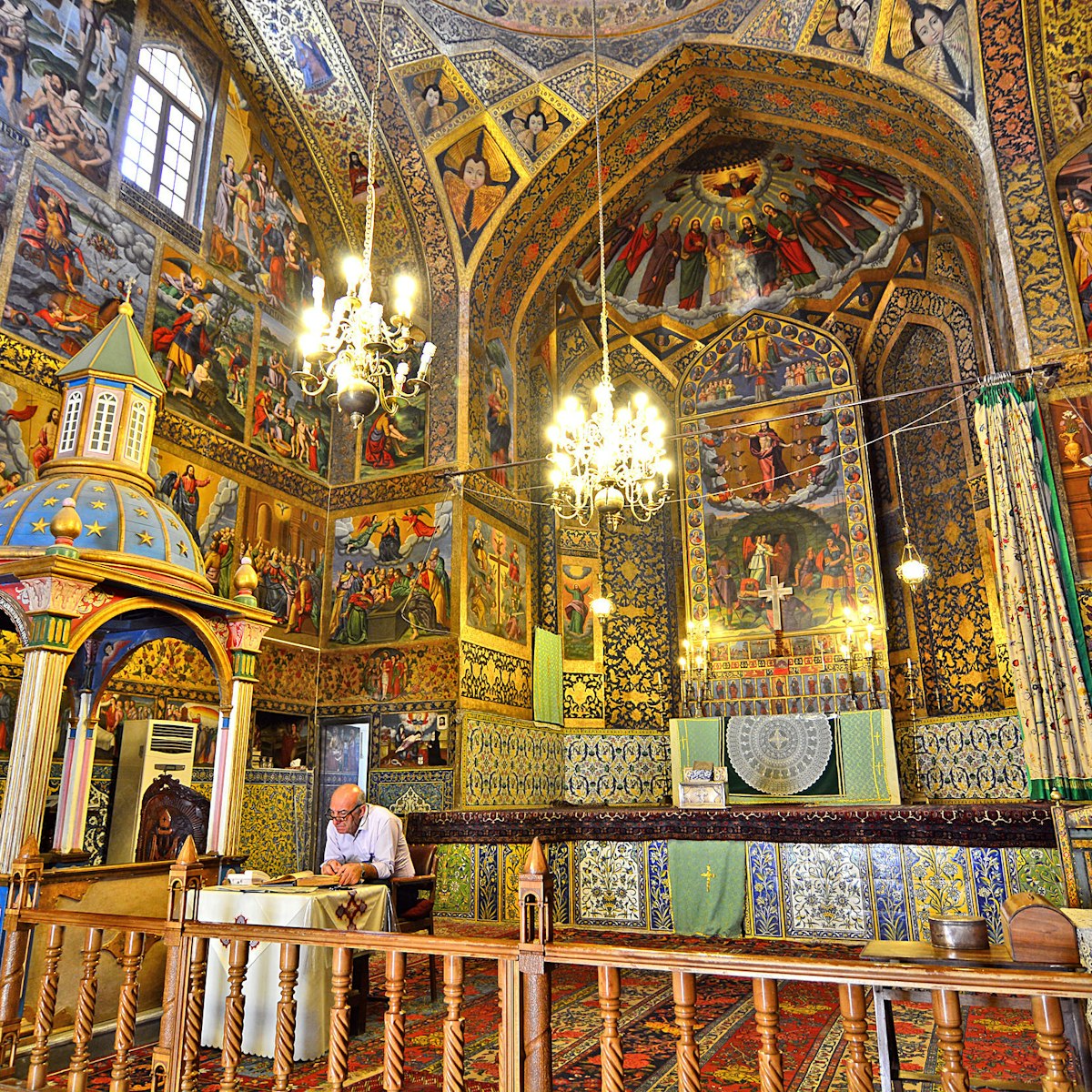There are few better ways to spend an afternoon than strolling along the Zayandeh River, crossing back and forth on the river's 11 bridges – or even meandering along the often empty riverbed itself. Such a stroll is especially pleasant at sunset and in the early evening when most of the bridges, five of which date back to the Safavid era, are brilliantly lit.
All but one of the historic Safavid-era crossings lie to the east of Chahar Bagh Abbasi St – the exception is the shorter Pol-e Marnan (Marnan Bridge) – but most people satisfy themselves with the walk from Pol-e Si-o-Seh (Si-o-Seh Bridge) to Pol-e Khaju (Khaju Bridge), and back. Traditionally, Esfahanis paused their perambulations to drink tea and enjoy a qalyan at one of the atmospheric teahouses on the Khaju, Chubi and Si-o-Seh bridges. These have been closed in recent years – ostensibly due to a concern that the large gas canisters used for heating water could explode and damage the bridges. Some are convinced, however, that the rise of religious conservatism is to blame and that the teahouses were closed because they were popular spots for young men and women to socialise. It looks as though, however, that it'll take more than the absence of tea to dampen the spirits of the youngsters congregating here today.





